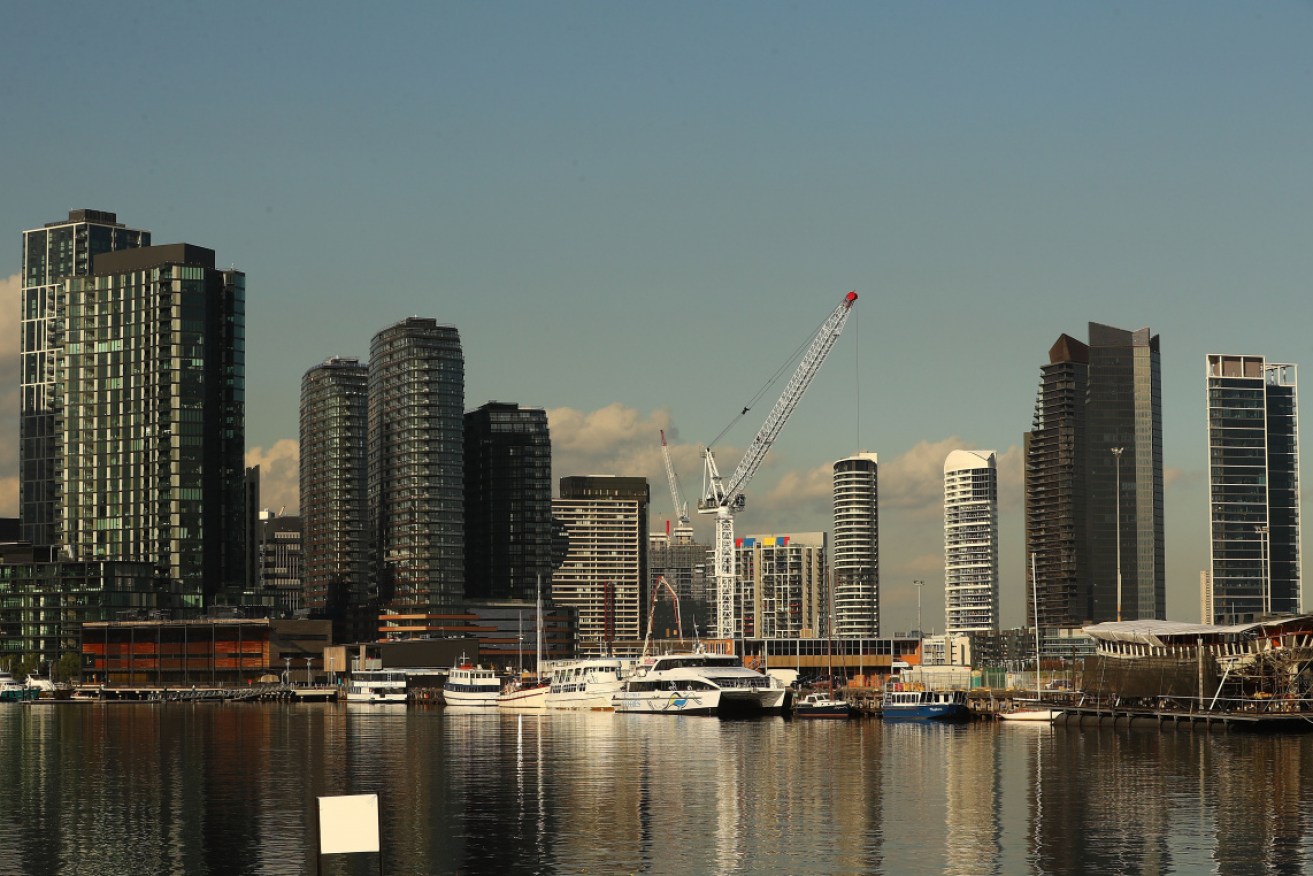Pain from apartment oversupply will be short-lived


Supply is currently exceeding demand in Melbourne's Docklands, according to RiskWise Property Research. Photo: Getty
An apartment glut in Brisbane, Melbourne and Sydney will mean better deals for renters, but more pain for developers and investors for the next one to two years.
Pete Wargent, co-founder of property investment advisory firm Allen Wargent, told The New Daily that the current oversupply of apartments in parts of Australia’s major cities had made it much harder for landlords to find tenants and, consequently, had led to a drop in rents.
He said that while Brisbane was “coming out the other side” of its glut, a steady stream of new apartments flowing into Sydney and Melbourne was putting downward pressure on rents across the board, and prices of new units.
“It will have less of an impact on the [sale] price of established apartments, because there aren’t many listed on the market at the moment, so there’s quite a lot of competition there,” Mr Wargent said.
“But for newer apartments and the rental market, the oversupply is probably going to take another 12 months to wash through.
“It has already led to a drop in rents in North Sydney and units near the Pacific Highway. And that has had a knock-on impact on established rentals, too, because people start thinking, ‘Well, if I can rent a brand-new apartment for however much per week, why would I rent an established one that has a bit of wear and tear?’”

There are much fewer units in the pipeline now than there were in 2017.
However, Mr Wargent said that the shrinking pipeline of future projects and Australia’s rapid population growth suggested any negative effects resulting from the oversupply of apartments would be short-lived.
“It’s not like we’ve got a massive structural oversupply of dwellings. It’s just a temporary glut – a lot of very similar properties hitting the rental market at the same time,” he said.
He added, though, that some developers with limited liquidity would likely go insolvent at this stage of the property cycle, which inevitably lowers prices.
“When that happens, you quite often find whole blocks of apartments hitting the market – either finished or not quite finished. They hit the market at a lower price, so that can have an impact on prices,” he said.
“Some markets, like Ryde and Epping, are already well down from where they were – maybe down 20 to 25 per cent from 18 months ago.”
Riskwise Property Research said the number of units in the pipeline is down 38 per cent from 2017 levels in New South Wales and Victoria, and down 29 per cent in Queensland.
The property analytics firm said there were 41,223 fewer units in NSW’s pipeline than there were in 2018; 39,725 fewer in Victoria, and 19,957 fewer in Queensland.
Like Mr Wargent, Riskwise CEO Doron Peleg argues that this shrinking pipeline demonstrates that the oversupply is nothing more than a cyclical market distortion.
“If there’s no major addition to the pipeline, then over the next 12 to 24 months the stock will be absorbed,” he told The New Daily.
He added that rental properties closer to the CBD were the worst affected, and that investors, who he described as the “target audience of these properties”, had become increasingly wary of the dangers of buying off the plan.

The negative impacts of apartment oversupply extend beyond inner-city areas.
Angie Zigomanis, associate director of residential property at BIS Oxford Economics, agreed that the glut of apartments was a short-term problem.
Mr Ziogmanis said the market had already begun to respond, with the Australian Bureau of Statistics recently reporting that approvals for private sector houses had dropped by 2.6 per cent in April and approvals for “other dwellings”, which includes apartment blocks and townhouses, had fallen by 6.5 per cent.
The way he sees it, no sooner will the challenge of oversupply be met than the problem of undersupply rise in its place – an issue he says the industry might struggle to overcome, given apartments now comprise a larger section of the market.
“Apartments tend to have a longer lead time. To add supply, you need to get your pre-sales, and then the apartment building might take a good couple of years to get completed,” he told The New Daily.
“Those lags mean that you might not be able to bring on supply quickly enough, which could lead to a pretty quick market tightening, with rents and prices coming up sooner than you might think.”








